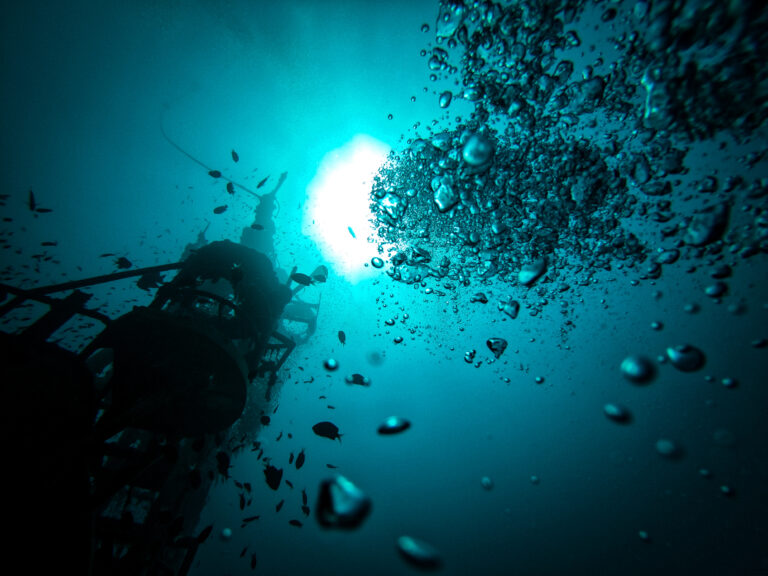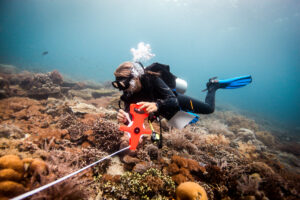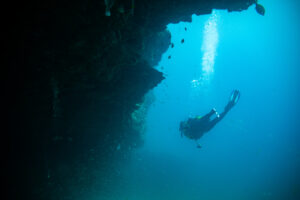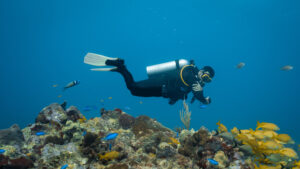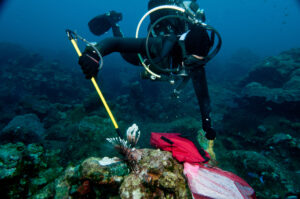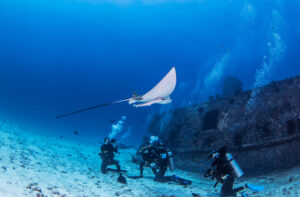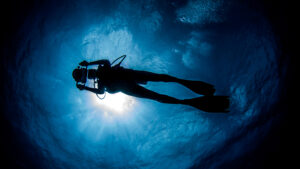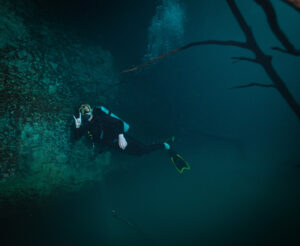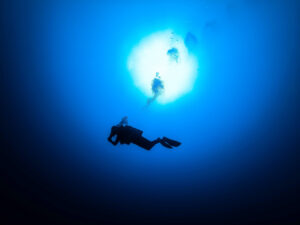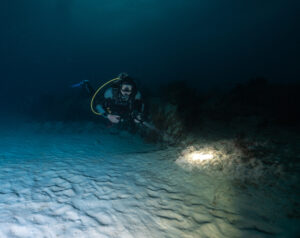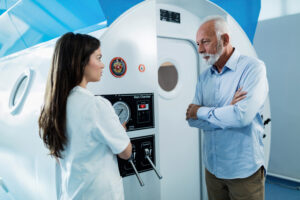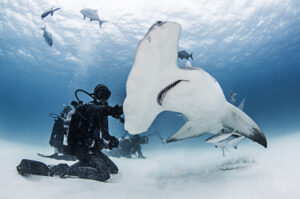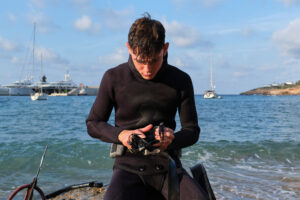What is Shallow Water Blackout?
Shallow water blackout is a sudden loss of consciousness that can occur among breath-hold divers, particularly in freediving. This phenomenon, triggered by hypoxia, is a significant safety concern for divers and can lead to fatal consequences if not identified and managed properly. Shallow water blackout often occurs near the surface after a deeper dive, making it a deceptive and dangerous occurrence. This comprehensive entry will explore the causes, symptoms, prevention, and treatment of shallow water blackout to help divers understand and mitigate the risks associated with this potentially lethal event.
Causes
A shallow water blackout is primarily caused by hypoxia, a condition where the body or a region of the body is deprived of adequate oxygen supply. During a dive, a breath-hold diver is subject to a range of physiological changes, including increased partial pressure of carbon dioxide (CO2) and decreased partial pressure of oxygen (O2) in the blood. As a diver ascends from a deeper dive, the pressure surrounding their body decreases, causing the partial pressure of gases within the body to decline as well.
While ascending, the reduced pressure causes the oxygen levels in the blood to decrease to a critical level, leading to hypoxia. The diver’s brain is particularly sensitive to hypoxia, and when oxygen levels drop below a certain threshold, the brain can no longer function properly, resulting in a sudden loss of consciousness known as shallow water blackout.
Symptoms
In the realm of scuba diving, one particularly insidious and often underestimated hazard is that of the shallow water blackout. This can be an especially challenging condition to detect, given its propensity to strike suddenly, without distinct or visible warning signs. To the unsuspecting diver, it can lead to a quick loss of consciousness, often unbeknownst to them that they’re in the grips of this grave peril. Knowledge and understanding of the potential symptoms of a shallow water blackout are therefore of utmost importance when engaging in activities like cavern diving, where a quick escape to the surface may not be feasible. However, some common indicators preceding a blackout may include:
Tunnel vision
Tunnel vision is one such possible precursor to a shallow water blackout. This phenomenon occurs when the peripheral field of vision begins to narrow, akin to viewing the world through a shrinking tunnel. This reduction in the field of vision is brought about by a decrease in the blood flow to the retina, the part of the eye that captures and translates light into visual signals for the brain. In the tight, often murky confines of a cavern, divers should be acutely aware of any narrowing of their vision, as it could signal the onset of a shallow water blackout.
Tinnitus
Another potential indicator of an impending blackout is tinnitus, which presents as a ringing or buzzing sound in the ears. This can be brought on by a diminished supply of oxygen reaching the auditory system. While underwater acoustics can often play tricks on a diver’s ears, the onset of tinnitus should not be dismissed lightly, as it may serve as an early warning sign of a blackout.
Mental confusion
Mental confusion, characterized by difficulty thinking or impaired decision-making, is yet another symptom that can precede a shallow water blackout. As the brain struggles to maintain normal function under the strain of an insufficient oxygen supply, cognitive capabilities can be compromised. Divers might find themselves unsure of their bearings, struggling to remember their training, or unable to make vital decisions. Any noticeable lapse in mental clarity during a dive should be treated with the utmost seriousness.
Lightheadedness or dizziness
Lightheadedness or dizziness can also act as harbingers of a shallow water blackout. These sensations of unsteadiness or imbalance are triggered by a reduction in oxygen levels in the brain. In the disorienting environment of a submerged cavern, it may be easy to attribute a sense of imbalance to the surrounding conditions, but it’s crucial for divers to recognize that this could be a warning sign of a much graver situation.
Prevention
Preventing accidents during cavern diving is paramount, as the unique challenges this activity poses often leave little margin for error. A crucial component of prevention is gaining a deep understanding of the risks associated with breath-hold diving, especially those that lead to shallow water blackouts, an alarming yet common occurrence in cavern diving. This comprehension comes from thorough and meticulous training, allowing divers to familiarize themselves with the physiological changes that take place during breath-hold diving. These changes are vital to grasp, as they allow divers to adopt and employ techniques to manage them, thus significantly reducing their risk of harm.
Proper training
The first strategy, proper training, is not to be underestimated. Undertaking formal freediving education and training equips a diver with critical knowledge about the physiological transformations that occur during a breath-hold dive. It also provides hands-on techniques to control these changes effectively. Not only does this training include theoretical knowledge, but it also involves practical skills like mastering underwater navigation and emergency procedures.
Breathing techniques
Next is the practice of proper breathing techniques before and after a dive. These techniques ensure the diver maximizes their oxygen intake and minimizes the build-up of carbon dioxide, thereby decreasing the likelihood of a shallow water blackout. Before a dive, divers are taught to breathe deeply and slowly to fill their lungs completely. After a dive, divers should take a series of deep, controlled breaths to replenish their oxygen supply and expel any remaining carbon dioxide.
Buddy system
One of the main safety measures while cavern diving, and indeed any type of diving, is the buddy system. This system stipulates that divers should always have a partner who is equally aware of the dangers of shallow water blackouts and can offer aid if required. This partnership provides a safety net, as divers can look out for each other and respond promptly to any sign of distress, thereby mitigating the risk of serious harm.
Progressive depth adaptation
The strategy of progressive depth adaptation is also crucial in preventing shallow water blackouts. This practice involves gradually increasing the depth of dives rather than making significant changes in a single session. This method gives the diver’s body enough time to adjust to pressure differences, reducing the likelihood of adverse physiological responses that could lead to blackouts.
Avoid hyperventilation
Avoiding hyperventilation is an essential preventive measure as well. Rapid, deep breathing before a dive can lead to a drop in carbon dioxide levels in the body. This reduction undermines the body’s natural urge to breathe, increasing the risk of shallow water blackout. Therefore, it’s crucial for divers to maintain a regular, controlled breathing pattern before diving.
Dive within limits
Respecting personal limits is key to staying safe while cavern diving. It can be tempting to push oneself beyond comfort zones, especially for thrill-seekers or those under peer pressure. However, overreaching one’s diving abilities can lead to dangerous situations, including shallow water blackouts. It’s vital for every diver to know their physical and mental limitations and to dive within them. Divers should never feel pressured to exceed their training or experience levels, as the ultimate goal is always safe and enjoyable diving.
Treatment and Recovery
Immediate action is crucial in the event of a shallow water blackout. If a diver loses consciousness, the following steps should be taken:
- Surface the unconscious diver as quickly and safely as possible.
- Establish and maintain an open airway by tilting the diver’s head back and lifting their chin.
- Administer rescue breaths if the diver is not breathing spontaneously.
- Signal for emergency assistance and initiate cardiopulmonary resuscitation (CPR) if necessary.
- Once the diver regains consciousness, place them in the recovery position and monitor for any signs of secondary drowning or other complications
- Seek medical attention as soon as possible, even if the diver appears to have fully recovered. Complications such as pulmonary edema or delayed neurological effects can develop after a shallow water blackout.
Long-Term Consequences and Risks
If not recognized and managed promptly, a shallow water blackout can lead to serious consequences, including drowning, brain damage, and even death. Additionally, divers who have experienced a shallow water blackout may be at higher risk for subsequent blackouts, as their bodies may have a reduced tolerance for low oxygen levels. It is essential for such individuals to undergo a thorough medical evaluation before resuming any breath-hold diving activities.
Education and Awareness
Promoting awareness and education about shallow water blackout is vital for the diving community. Understanding the causes, symptoms, prevention strategies, and treatment options can significantly reduce the risks associated with this phenomenon. Dive organizations and instructors play a crucial role in disseminating this information to divers at all skill levels.
Moreover, sharing personal experiences and near-miss incidents can serve as a valuable learning tool for other divers. By fostering open communication and learning from one another’s experiences, the diving community can create a safer environment for all participants.
Shallow water blackout is a dangerous and often misunderstood aspect of breath-hold diving, particularly freediving. Through proper education, training, and adherence to safety protocols, divers can minimize the risks associated with this potentially fatal event. By understanding the physiological processes involved, recognizing the warning signs, and implementing prevention strategies, divers can enjoy the underwater world safely and responsibly. In the event of a shallow water blackout, swift and appropriate action can make all the difference in preventing tragedy and ensuring a safe return to the surface.

